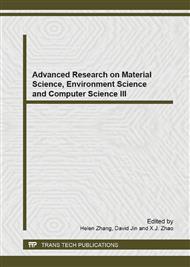p.617
p.621
p.625
p.629
p.633
p.637
p.642
p.646
p.650
Research on Information Applied Technology with Video Compression Algorithms Based on the Optimal Multi-Band Haar Wavelet Transform
Abstract:
Video playback has been one of the most important online communication ways. With the application of stereo video, large amount of video data need to be stored and transported so that fluency and clarity of demand system, and how to efficiently conduct compressed encoding for stereoscopic video data becomes a hot topic currently. In view of this problem, this paper puts forward the video-on-demand compression algorithm based on the optimal multi-band Haar wavelet transform, through the research on wavelet transform algorithm model to reinforce the algorithm secondly, strengthening from the binary wavelet theory into octal wavelet system theory to get better compression capability. The simulation experiments show that video-on-demand compression algorithm based on the optimal multi-band Haar wavelet transform proposed in this paper has a good compression performance not only under medium and high bit- rate conditions, and also reaches the H. 263 under low bit-rate condition.
Info:
Periodical:
Pages:
633-636
Citation:
Online since:
January 2014
Authors:
Keywords:
Price:
Сopyright:
© 2014 Trans Tech Publications Ltd. All Rights Reserved
Share:
Citation:


